From mummies to shrunken heads, 8 odd items you can find at this small Oklahoma museum
SHAWNEE — Just because Halloween has passed doesn't mean that Oklahomans have to stop celebrating the eerie, unusual and downright odd — especially if they happen to travel to a certain corner of Shawnee.
Tucked into a quiet pocket of Oklahoma Baptist University’s Green Campus, formerly St. Gregory's University, the Mabee-Gerrer Museum of Art is one of Oklahoma's oldest museums and boasts an eclectic collection, which includes the only ancient Egyptian mummies in the Sooner State.
The museum will celebrate its two mummies — especially Tutu, the older and better preserved of the pair — with one of its fall-favorite annual events: Mummy Day 2022 is set for 11 a.m. to 3 p.m. Nov. 5.
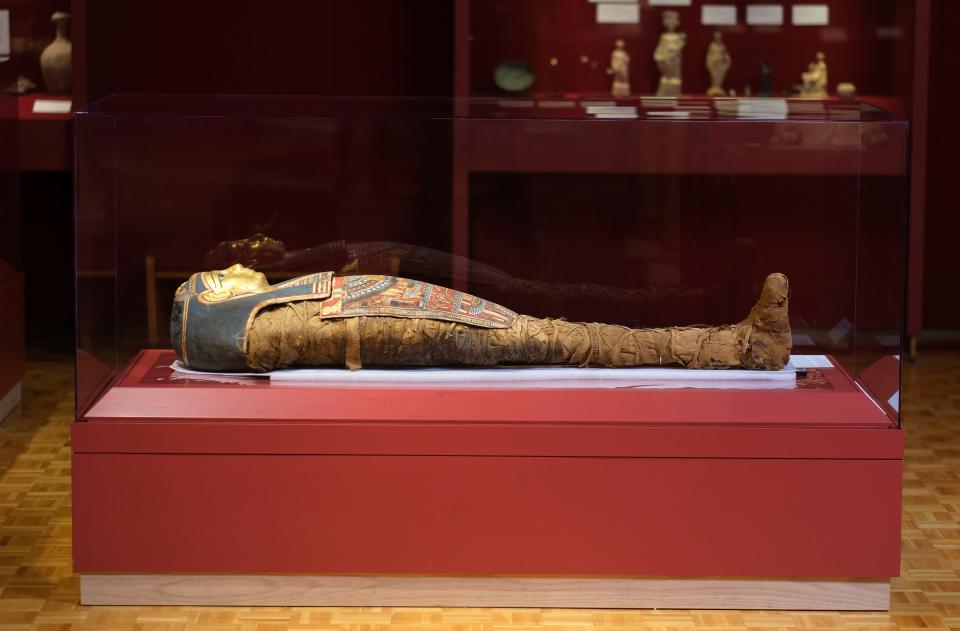
“Tutu is a favorite of many visitors, from schoolchildren to adults,” said Dane Pollei, the museum's director and chief curator, in an email.
Along with free admission to the museum, the all-ages Mummy Day festivities will include face painting, games and creative activities like making scarab bracelets, Egyptian collars, popsicle mummies and jelly prints. Bob Pickering, professor emeritus of anthropology at the University of Tulsa, will answer questions for “Ask the Mummy Expert," and the Poverty Dogs food truck will be on-site for visitors hungry for more than just knowledge.
More: He was an outlaw. Then, he was a mummy. Now, Elmer McCurdy has his own musical
From mummies and other ancient Egyptian treasures to shrunken heads and an uncanny portrait of a pope, here are eight unusual attractions worth making a trip to the Mabee-Gerrer Museum of Art for:
1. The Egyptian mummies
Louis Bennet, of Buffalo, New York, discovered the mummy now known as Tutu and presented her to the Glen Island, New York, museum in 1897. In 1917, the Glen Island Corp. declared bankruptcy, the museum's contents were auctioned off in 1921, and Father Gregory Gerrer purchased the mummy for the new museum he had founded in Shawnee just a few years earlier.
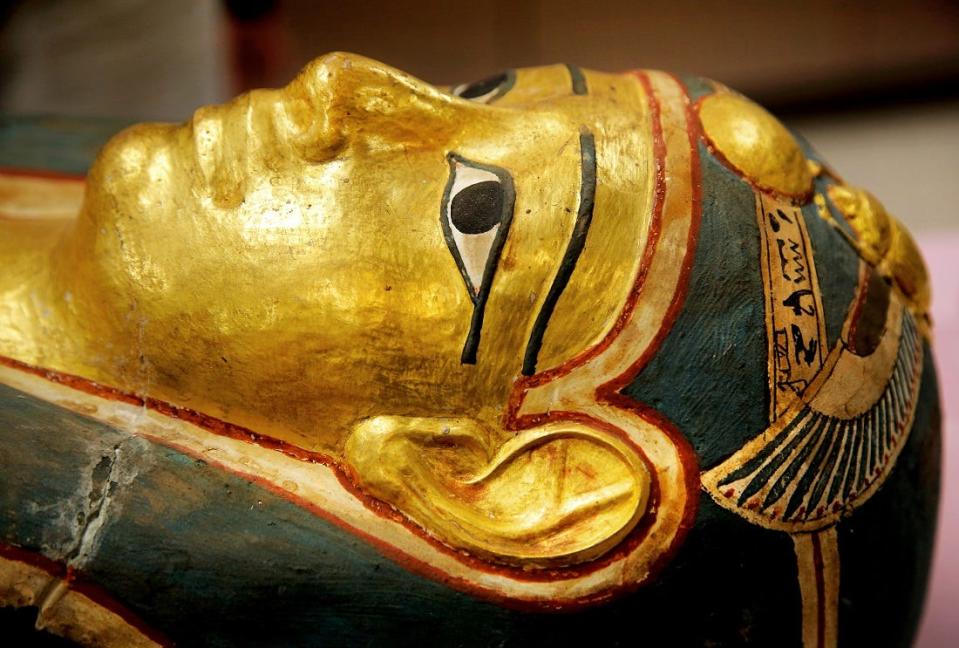
Tutu died between 150 and 100 BCE in the Ptolemaic Period. She was found in the Faiyum area of Egypt, near the Pyramid of Hawara-el-Market. She was originally thought to be named Princess Menne, but in 1992, Emily Teeter of the Oriental Institute in Chicago read the hieroglyphics on her breastplate and realized her real name.
As part of its centennial celebration in 2019, the museum worked with a forensic artist to recreate Tutu’s face. Jonathan Elias created the three-dimensional bust of Tutu using a 3-D printed skull based on her 2015 CT scans done by radiologists at SSM Health St. Anthony Shawnee Hospital.
Also female, the museum's other mummy is from the el Hiba/Sedment area near Faiyum. She died in the second century AD, during the Roman rule of Egypt. The Roman era mummy doesn't have a name, because there isn't one written on her sarcophagus, nor does she have a breastplate like Tutu.
2. Animal mummies and canopic jars
Along with Tutu and her Roman era counterpart, the museum's collection of ancient Egyptian artifacts also includes a mummified cat and hawk, plus canopic jars, which were made to contain the organs that were removed from the body during the mummification process.
"One of them actually does have the mummified remains of the organ, so that's kind of cool-slash-creepy," Delaynna Trim, the museum's curator of collections, told The Oklahoman.
3. Shrunken heads
Another popular cool/creepy attraction, a pair of shrunken heads from South America are displayed in a special spot inside the museum.
"When you first walk in, we have one of Father Gerrer's original cases with items that he had in the original museum 100 years ago. It's meant to showcase that museums once were called 'Wunderkammern,' or cabinets of curiosities, to basically collect all the cool stuff. And that's what museums were like at the turn of the (20th) century," Trim said.
"Above there we've got the (conquistador's) helmet, and in the case is where we've got the shrunken heads. I think there's a pair of Japanese shoes in there, and there's one of Father Gerrer's original notebooks that he wrote down the collection in. There's a pig tin whistle. It's just kind of to show ... the wide variety of stuff he collected."
4. Father Gerrer's portrait of Pope Pius X
A Benedictine monk, Father Gerrer (1867-1946) wasn't just a passionate collector, he was also an acclaimed artist. Dominating one wall of the museum is Gerrer’s portrait of Pope Pius X.
"If you're going for the creepier side of things, the fact that the eyes (seem to) follow you always freaks out especially the little kids," Trim said.
"The great thing is that Father Gerrer was over in Italy learning his skill whenever they had the election of the new pope, so he put his name in the hat to paint the portrait. And he actually got picked, which in and of itself was big, just to be one of those to paint the pope. He actually got an audience with the pope, painted him, and then the pope actually picked his painting out of all of those who had painted him. He said, 'You painted me warts and all.' So, he actually got to paint the first official portrait of Pope Pius X."
The one in the Shawnee museum is the original portrait; Gerrer painted a second copy for the Vatican that is still in the Vatican today.
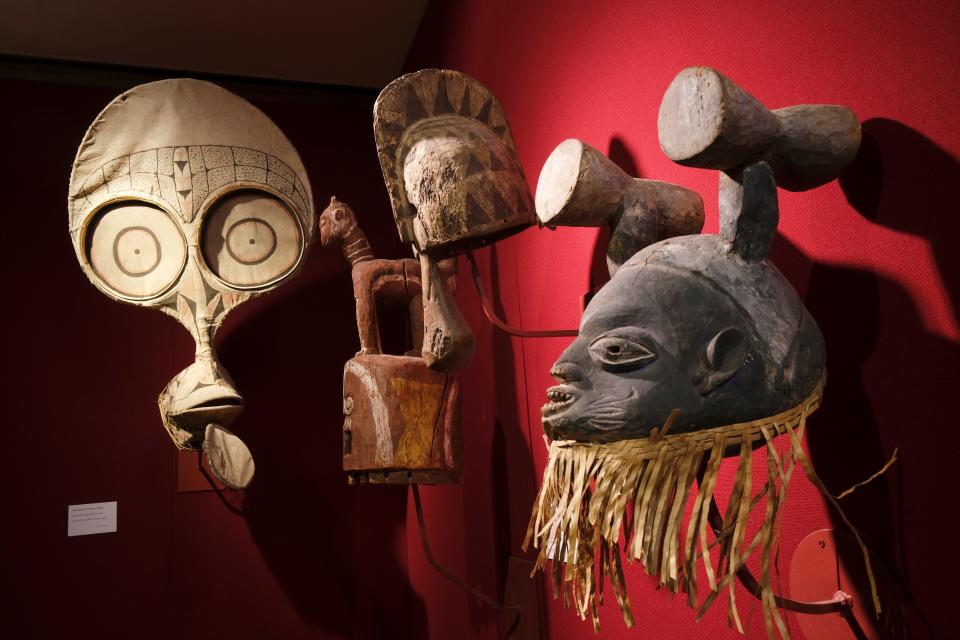
5. African and Oceanic masks
The museum's African and Oceanic collection includes jewelry, household objects and weapons but among the most beloved and fascinating items are the masks.
"We've got masks from all over Africa and the Pacific. One of the popular ones is from Papua New Guinea: It's a Baining Fire Dance mask, and it basically looks like a giant owl that you would put on the top of your head," Trim said.
"It's a great mask that was used in a male dance in the evening hours. It'd be around the fire — hence the name — and there was a corresponding female dance that would happen in the daytime."
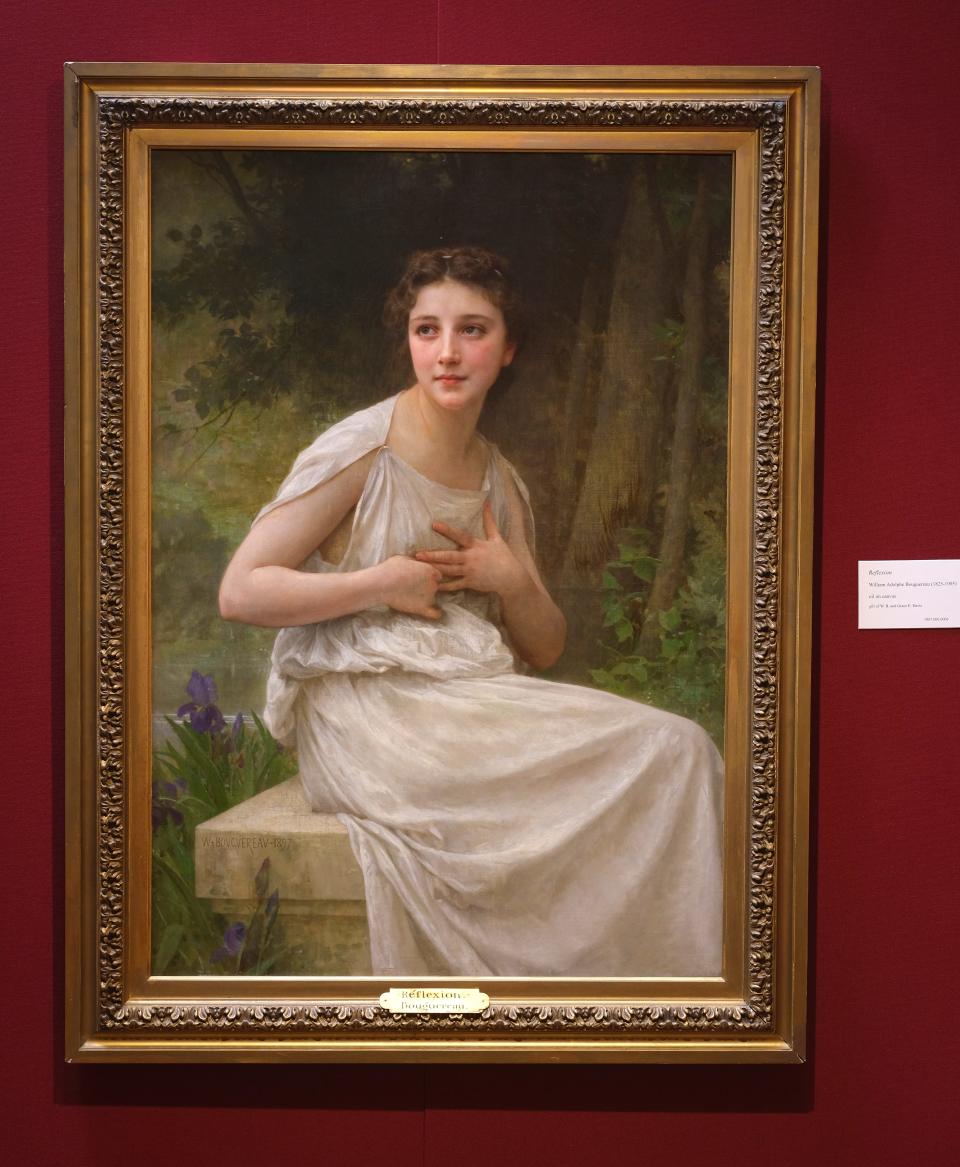
6. William-Adolphe Bouguereau's 'Reflexion'
French painter William-Adolphe Bouguereau's "Reflexion," depicting a pensive young woman sitting on a garden bench, is one of the favorite artworks in the museum's permanent collection.
But the traditionalist painter's photorealistic style might just be a little too good in this case: Look at "Reflexion" long enough and you might get the spooky feeling that the contemplative girl he's immortalized is going to start telling you her troubles at any moment.
7. Full suit of armor with shield and halberd
Although it was created for a warrior shorter and slighter than the average contemporary American, it's easy to see why full metal suits of armor like this one have become so iconic: They are intimidating to behold in real life. There's an uncanny sense that it could go on the attack anytime.
Created by Vincenzo Zenon — or, more likely, made by more than one craftsman under the supervision of Zenon, a master armorer — the suit dates back to 1446 and hails from Venice, Italy.
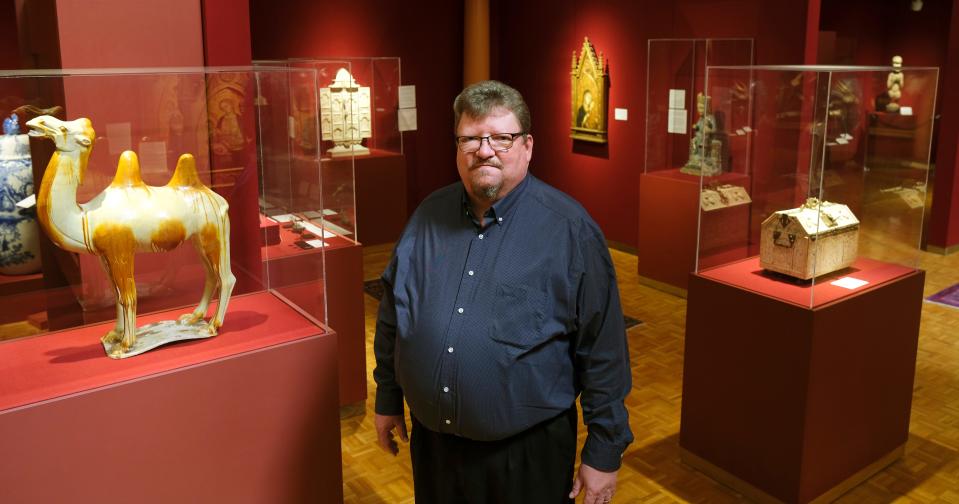
8. Tang Dynasty camel
The museum's Asian art collection includes pieces from the Shang Dynasty (circa 1600 to 1046 BCE) through the 20th century, but the terra cotta figure of a Bactrian, or two-humped, camel dating to the Tang Dynasty (618 to 906 AD) is a standout, in part because of its eerily exaggerated features.
"It's a great example of the type of pottery that they were doing at the time ... we've got a couple in the case opposite it. But the camel is fantastic. Kids and adults love it just because it's bigger and it's a little showier. I mean, it's a camel; who doesn't like camels?" Trim said.
"One thing about having an encyclopedic collection like we have is there's a little bit of something for everyone."
For more information, go to https://www.mgmoa.org.
Features Writer Brandy "BAM" McDonnell has covered Oklahoma's arts, entertainment and cultural sectors for The Oklahoman for 20 years. Reach her at bmcdonnell@oklahoman.com,www.facebook.com/brandybammcdonnell and twitter.com/BAMOK. Support her work by signing up for her See & Do Oklahoma newsletter and subscribing to The Oklahoman.
This article originally appeared on Oklahoman: Mummies and shrunken heads: 8 odd items at Mabee-Gerrer Museum of Art

